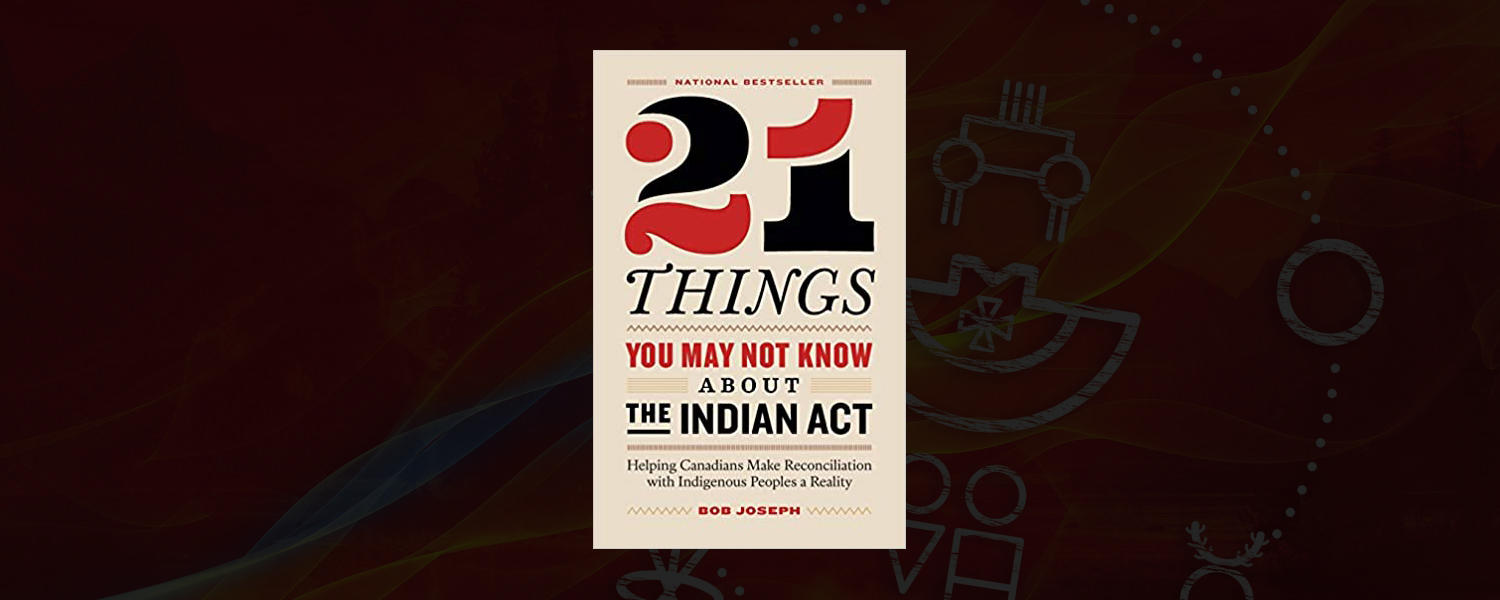
21 Things You May not Know About the Indian Act
by Bob Joseph
Description:
Publisher's description (Indigenous Relations Press):
Based on a viral article, 21 Things You May Not Know About the Indian Act is the essential guide to understanding the legal document and its repercussion on generations of Indigenous Peoples, written by a leading cultural sensitivity trainer.
Since its creation in 1876, the Indian Act has shaped, controlled, and constrained the lives and opportunities of Indigenous Peoples, and is at the root of many enduring stereotypes. Bob Joseph’s book comes at a key time in the reconciliation process, when awareness from both Indigenous and non-Indigenous communities is at a crescendo. Joseph explains how Indigenous Peoples can step out from under the Indian Act and return to self-government, self-determination, and self-reliance—and why doing so would result in a better country for every Canadian. He dissects the complex issues around truth and reconciliation, and clearly demonstrates why learning about the Indian Act’s cruel, enduring legacy is essential for the country to move toward true reconciliation. Bob Joseph is a member of the Gwawaenuk First Nation.
Author's Biography (Indigenous Relations Press):
Bob Joseph, founder of Indigenous Corporate Training Inc., has provided training on Indigenous and Aboriginal relations since 1994. As a certified Master Trainer, Joseph has assisted both individuals and organizations in building Indigenous or Aboriginal relations. His clients include all levels of government, Fortune 500 companies, corporate enterprises, and Indigenous peoples in Canada, U.S., Central and South America, and in the South Pacific. In 2006, Joseph co-facilitated a worldwide Indigenous Peoples’ round table in Switzerland, which included participants from across the world. Joseph has also worked in cultural relations and corporate training for many years, and taught at Royal Roads University as an associate professor.
Bob Joseph is an Indigenous person, or more specifically a status Indian, and is a member of the Gwawaenuk Nation. The author comes from a proud potlatch family and is an initiated member of the Hamatsa Society. As the son of a hereditary chief, he will one day become a hereditary chief.
Resource format: Non-Fiction History
Age recommendation: University
Keywords: reconciliation, treaty, history, Indian Act, resistance, residential schools, truth and reconciliation, calls to action, decolonization, colonialism, democracy, government, self-government, land back, land claims, Indigenous rights, sovereignty, citizenship, Indian status, self-reliance, self-determination, Canadian relations, law, legislation, assimilation, identity, Indigenous politics,
Year of publication: 2018
Publisher information: Indigenous Relations Press
Teaching and Learning Ideas
Our team collaborated with new teachers, alumni of the Werklund School of Education’s Bachelor of Education program, to create teaching and learning plans for texts in this website. With audiences ranging from Pre-Kindergarten to Post-Secondary, lesson plans across this resource address a wide range of school subject areas, inclusive approaches, and Indigenous education topics, such as the revitalization of Indigenous languages. As this website was designed with Undergraduate Programs in Education instructors, as well as teachers in mind, connections to UPE courses have been flagged on each lesson plan. These lessons are intended as a starting place for educators, to help you envision ways in which you might bring Indigenous literatures, as well as ways of knowing, being, and doing, into your teaching contexts. Please adapt, use, and share these lessons in ways that are generative for your teaching practice. We offer our sincere thanks to the dozens of new teachers who gifted us with these creative ideas!
Return to Search for Resources
